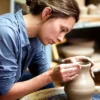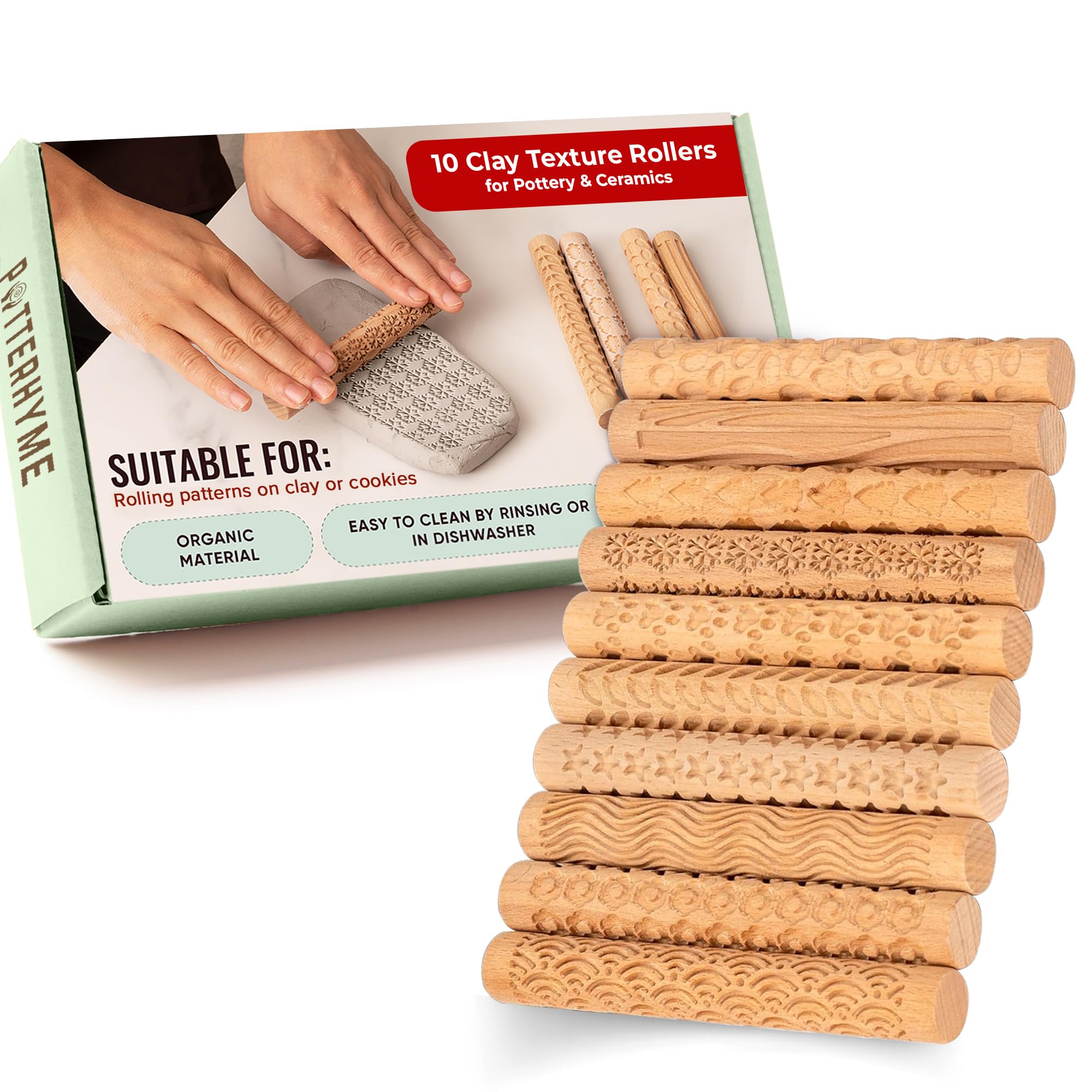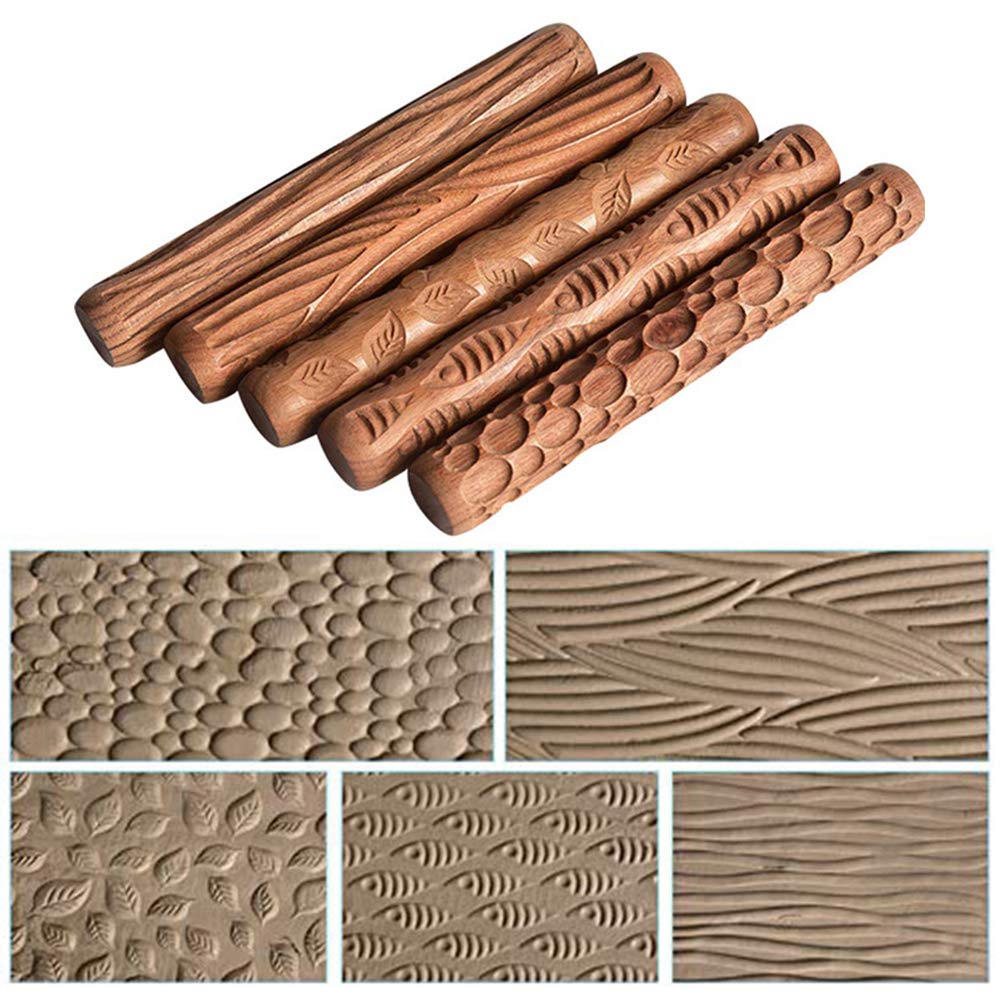Pottery is an ancient art form that combines creativity with practicality.
The tactile pleasure of molding clay and the satisfaction of crafting something by hand keep this tradition alive today.
Central to pottery is the concept of texture, which can dramatically alter the finished product’s appearance and feel.
Texturing tools enhance the surface of clay pieces, providing unique designs without the need for carving or mold-making.
Pressing texture forms are tools that help potters add intricate details effortlessly.
These forms are made from materials like rubber, silicone, or wood and come in various patterns and sizes.
Choosing the right pressing texture ensures that the final piece not only looks appealing but also reflects the intended artistic vision.
When selecting pressing texture forms, several factors must be considered.
The material is crucial, as it determines the durability and ease of use.
Size is important, particularly when working with large or small clay pieces.
Ease of cleaning is another consideration, as clay residue can affect the details of future projects.
We examined numerous pressing texture forms to find the options that help transform clay into art seamlessly.
Best Pressing Texture Forms for Pottery
We have curated a selection of the best pressing texture forms for pottery that are available.
These tools are perfect for adding intricate designs and unique patterns to your clay creations.
Let’s explore our top picks to help enhance your pottery projects.
MKM Wood Big Hand Rollers
These rollers are the go-to tool for anyone looking to imprint beautiful patterns on pottery with ease, making them a fantastic investment for both hobbyists and professionals.
- Leaves clear and deep impressions
- Lightweight and easy to maneuver
- Durable finish ensuring long-lasting use
- May not be ideal for beginners
- Limited to certain pattern designs
- Smaller size might not suit large projects
Working with the MKM Wood Big Hand Rollers has been an eye-opening experience for us.
The precision with which these tools carve out patterns in the clay is impeccable.
The unique beveled design releases from the clay effortlessly, saving us from the frustrating task of dealing with stuck pieces.
Their lightweight nature makes them perfect for rolling up the walls of a pot, expanding our creative possibilities without tiring our hands.
We also appreciate the thoughtfulness in the design, especially the rounded ends that prevent unwanted lines in our creations.
While the intricate patterns are breathtaking, we found that beginners may need some time to fully harness their potential.
Despite this, the quality and ease of use make MKM’s Big Hand Rollers a staple in our pottery toolkit.
Byllstore Texture Rollers & Stamps
A great choice for potters of all levels looking to add detailed textures to their creations with ease and precision.
- Made from durable beech wood
- Combination of rollers and stamps for versatility
- Large size offers more control
- Patterns may be too large for smaller projects
- Limited design variety
- No handle, requires manual pressure
The Byllstore Clay Texture Rollers and Stamps set offers an impressive range of features that can elevate your pottery creations.
The premium beech wood material ensures longevity, making these textures a reliable addition to our toolkit.
We’ve found that their sturdy construction can withstand regular use without compromising on performance.
This set shines in providing us with versatility through its dual functionality as texture rollers and stamps.
It’s particularly rewarding to experiment with combining these tools, allowing us to adapt to different materials and projects.
The three distinct patterns — Fish Scale, Moroccan, and Honeycomb — provide excellent variety, enhancing our pottery with intricate designs.
While the rollers work beautifully on larger surfaces, they might not be ideal for smaller projects due to the scale of the patterns.
Despite this, we’ve appreciated the flexibility and ease of use.
Rolling these tools over clay doesn’t require much effort, and the lack of a handle hasn’t been a disadvantage, allowing for more direct interaction with the clay.
Potterhyme 10pcs Wooden Clay Texture Rollers
For anyone looking to add exquisite textures to pottery, this set provides versatility, ease, and durability.
- Wide variety of patterns for creativity
- High-quality Beechwood for durability
- Easy to clean and dishwasher safe
- Patterns on ends have plain borders
- Requires storage space due to number of pieces
- May require initial practice for best results
When using the Potterhyme wooden clay rollers, we were impressed by the wide array of patterns available.
Each design adds a unique flair to our pottery projects.
The craftsmanship shines through with each roller being made of high-quality Beechwood, ensuring they stand the test of time.
Handling these rollers is a breeze.
Since they are lightweight, adjusting the depth of the imprint on clay becomes a simple task, allowing for both delicate and bold textures as needed.
Cleaning up afterwards is a painless process; a quick rinse or a round in the dishwasher effectively does the job.
These rollers are packaged in a smart gift box, making them a fantastic option for gifting to fellow pottery enthusiasts.
While the ends of the rollers have a plain border, the overall pattern variety makes them a valuable addition to any potter’s toolkit.
OwnMy Clay Pattern Rollers Kit
A versatile set for pottery enthusiasts looking to add distinct textures to their creations.
- Solid wood ensures durability.
- Provides five distinct texture options.
- Easy to use without handles.
- Smaller in size than expected.
- Requires multiple passes for larger surfaces.
- May not be suitable for intricate projects
Exploring with the OwnMy Clay Pattern Rollers Kit was straightforward and enjoyable.
The solid wood construction gave us confidence in its longevity.
We were particularly impressed by the variety offered by the five different patterns, including cobblestone and wood grain.
These rollers left clear, distinct impressions on the clay.
While some might find the size a bit small at first, we found them easy to manage.
When crafting larger pottery pieces, laying out textures precisely took some extra effort.
The rollers required consistent alignment, yet still achieved the desired decorative effect effectively.
Their compact design means they’re easy to store.
For those who appreciate clear textures in their pottery work, this kit is a worthwhile investment.
We recommend them to both beginners and seasoned potters eager to elevate their craft with unique patterns.
Yushen Texture Rolling Tools
These Yushen wooden rollers deliver excellent texture options for clay work, perfect for both beginners and experienced potters looking to enhance their creations.
- High-quality wood ensures durability and smooth handling.
- Five distinct texture patterns offer creative versatility.
- Perfect size for both slab work and pot walls.
- Smaller diameter may not meet everyone’s preference.
- Need regular cleaning to maintain performance.
- Pictures may seem misleading regarding size expectation.
With these Yushen rollers, we found crafting pottery pieces to be a more engaging experience thanks to the five unique patterns.
The wood material feels sturdy in our hands, contributing to a pleasant rolling process.
Each of the patterns transfers clearly onto the clay, allowing us to explore new textures effortlessly.
The rollers are compact, making them easy to maneuver on both vertical and flat clay surfaces.
While some might prefer a larger diameter, we appreciated the precision they afforded.
Maintenance is straightforward, though frequent cleaning is a must to keep them in optimal condition.
In terms of value, the price is reasonable considering the variety and quality.
Despite initial misgivings about their size based on photos, we found their performance to be well-suited for a range of projects.
Overall, they present a solid addition to any pottery toolkit for those willing to clean up regularly.
Buying Guide
When selecting the best pressing texture forms for pottery, paying attention to a few key features is essential.
Let’s explore what to consider before making a purchase.
Material:
We often encounter texture forms made from wood, rubber, and silicone. Wood offers durability, while rubber ensures flexibility. Silicone combines both traits and offers easy cleaning.
Each has distinct advantages depending on our pottery needs.
Size and Shape:
Different projects require varying sizes and shapes.
Rounded forms may suit small items, whereas larger or square shapes can work for broad surfaces.
A mix of sizes enhances versatility in our creations.
Ease of Use:
Handling should be comfortable.
Look for ergonomic designs that fit well in our grip.
Lightweight forms often reduce fatigue during prolonged work sessions.
Patterns Variety:
A diverse range of patterns enriches creativity.
Examine whether the forms come with unique, intricate designs or more standardized patterns.
Choosing wisely will enhance the textural quality of our pottery.
| Feature | Options |
|---|---|
| Material | Wood, Rubber, Silicone |
| Size & Shape | Varies |
| Handle | Ergonomic, Lightweight |
| Pattern Variety | Unique, Standard |
Durability:
Forms must withstand regular use without wearing out quickly.
Inspect the quality of material and craftsmanship.
Durable forms offer long-term reliability and are a worthwhile investment.
Cost-Effectiveness:
We must evaluate the balance between price and feature offerings.
It’s crucial to find forms that align with our budget while meeting essential criteria.
This thoughtful approach ensures a fulfilling pottery experience.
Frequently Asked Questions
We explore popular texture techniques suitable for beginners, methods involving GR Pottery Forms, and free resources for adding design to pottery.
We also discuss pressing forms, ideal drying surfaces, and selecting the right work surfaces for successfully applying texture.
What are the most suitable texture techniques for beginners in pottery?
New potters benefit from using tools like texture mats and rolling pins with imprinted designs.
These are user-friendly and offer consistent results.
Finger and tool carving provide creative opportunities and help beginners understand how textures affect the final piece.
How do I use GR Pottery Forms to create textured pottery pieces?
GR Pottery Forms are useful for shaping and adding texture to pots.
We start by pressing clay over these forms, which come in various shapes.
Adding texture can be achieved with sponge rollers or stamps during shaping.
What are some free resources or techniques to add texture to pottery?
Many online tutorials and community forums offer insights into texturing techniques.
Using household items like lace, leaves, or burlap can provide unique patterns.
Experimenting with these found materials allows for personalized creations without additional costs.
Can you explain the technique of pressing forms into clay for decorative effects?
Pressing forms into clay is straightforward.
We can use stamps, lace, or textured objects to press into soft clay before it hardens.
This technique offers a wide range of decorative possibilities, allowing artisans to explore various patterns and styles.
Which surfaces are ideal for drying pottery with textured forms?
Textured pottery requires careful drying to maintain detail.
Ribbed wooden boards and plaster bats are effective surfaces, as they absorb moisture evenly.
These materials help prevent warping and cracking while supporting the texture.
What considerations should be made when selecting a surface for pottery work to ensure proper texture application?
Ensuring the right work surface is smooth yet firm is key.
A clean, solid table helps maintain texture precision.
We recommend avoiding overly soft or highly absorbent surfaces, which can disrupt the applied design.
Safety and stability are vital for successful pottery work.







